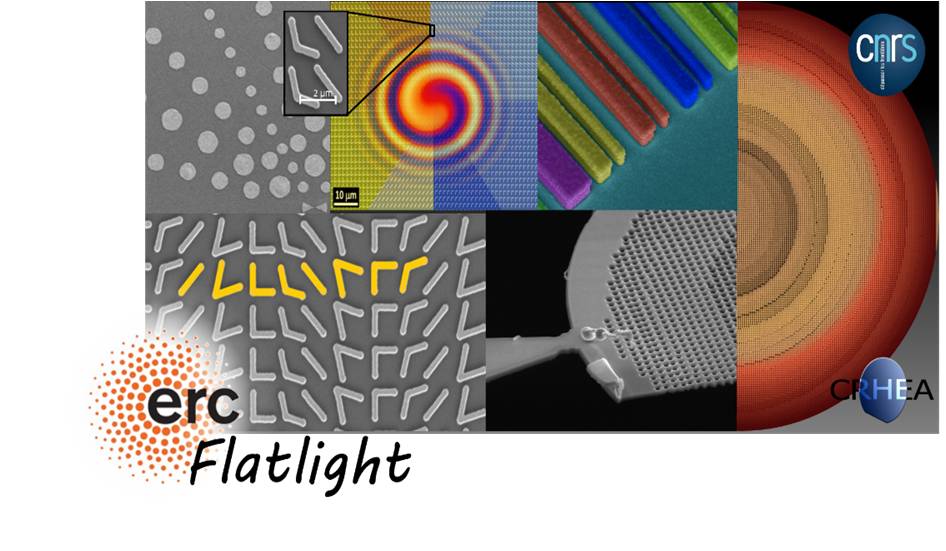| Recent publications
|
|---|
⋄ Exploiting extraordinary topological optical forces at bound states in the continuum Haoye Qin, Yuzhi Shi, Zengping Su , Guodan Wei, Zhanshan Wang, Xinbin Cheng, Ai Qun Liu, Patrice Genevet, Qinghua Song |
⋄ Space and Time Modulations of Light with Metasurfaces: Recent Progress and Future Prospects Elena Mikheeva, Christina Kyrou, Fouad Bentata, Samira Khadir, Sébastien Cueff, and Patrice Genevet |
While the operation of most conventional optical devices has hitherto been based on modifying the phase, amplitude or polarization of the wavefront of light during propagation (ΔΦ=2Π/λ ηι where λ is the wavelength of light, η l’the refractive index and ι the thickness of the medium) new components now make it possible to control the wavefront using a thick optical interface extremely thin ("flat optics"). These new components come from an assembly of nano-scale diffusers or optical resonators - all positioned at subwavelength distances to each other - in a suitable pattern. These new interfaces are similar to planar networks of artificial atoms with optical responses that do not exist in nature. At CRHEA, we study, manufacture and characterize these new interfaces with specialized electromagnetic properties, both theoretically and with a view to specific applications that aim to integrate them with large gap semiconductors. This research, which is entirely funded by a European project of the European Research Council named FLATLIGHT no. 639109, will allow us to create new ultra-thin optoelectronic components in visible wavelengths.
 Contact ?
Contact ?
- For any question about the metasurfaces: Patrice Genevet
- For more information, you can visit the groups's website: http://2dphotonics.weebly.com/



